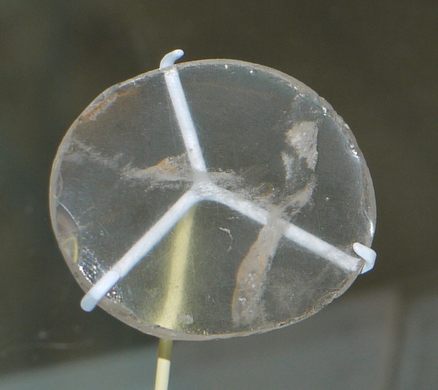Nimrud Lens
Despite the name, this ancient piece of crystal may not have been a lens at all.
Discovered in 1850 by English archaeologist Austen Henry Layard at the ancient Assyrian palace of Nimrud, in modern-day Iraq, the Nimrud Lens is a curious piece of rock crystal dating back to the late 8th century B.C.
Roughly ground into a slightly oval shape, its size is 38 millimeters in diameter and has a focal point and length equivalent to a 3× magnifying glass. Its function is unclear, and it could have been a magnifying glass or a burning glass, a tool used to start fires by concentrating sunlight. As the Assyrian artifacts often were intricately engraved, Layard suggested that the lens may have been used as a magnifying lens to read these small inscriptions.
Italian scientist Giovanni Pettinato proposed that the Assyrians used the lens as part of their telescope, which would explain the extensive knowledge of astronomy in the Babylonian civilization. Some people believe that it was the earliest optical lens in history, perhaps an obscure out-of-place artifact.
The general idea of its identity seems to be much less fascinating, though. Many researchers believe that it was just a piece of decorative inlay, which got its lenticular abilities purely by accident. Whichever story you buy, the artifact sits on display at the British Museum today in quite a mysterious manner.
Update: The object is no longer on display at British Museum.

















Follow us on Twitter to get the latest on the world's hidden wonders.
Like us on Facebook to get the latest on the world's hidden wonders.
Follow us on Twitter Like us on Facebook